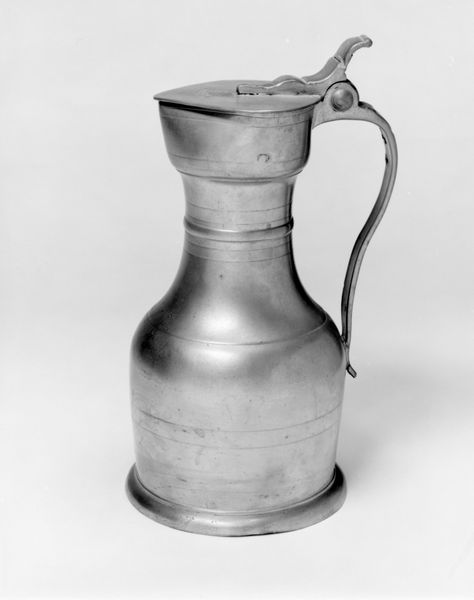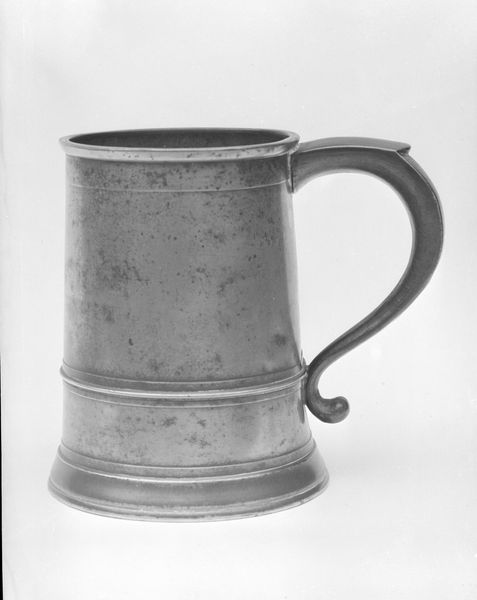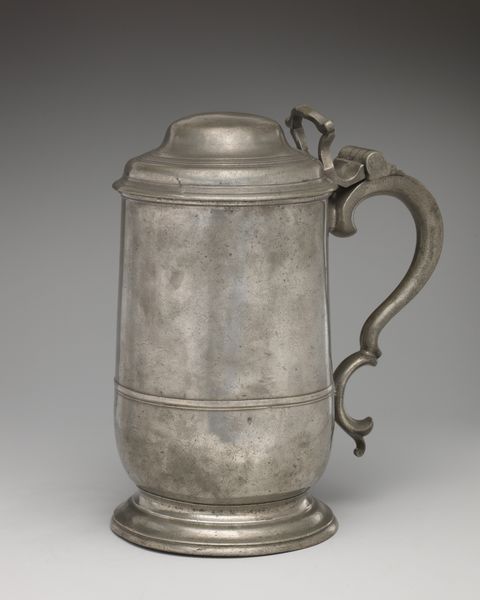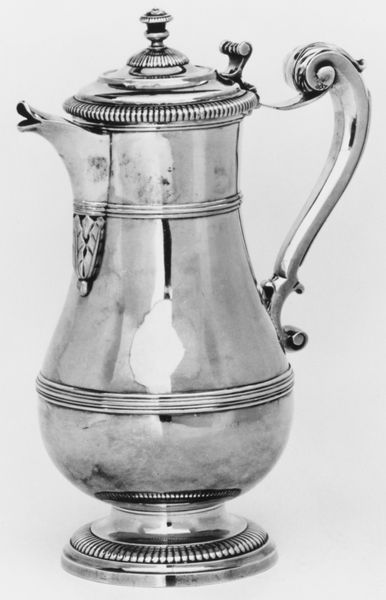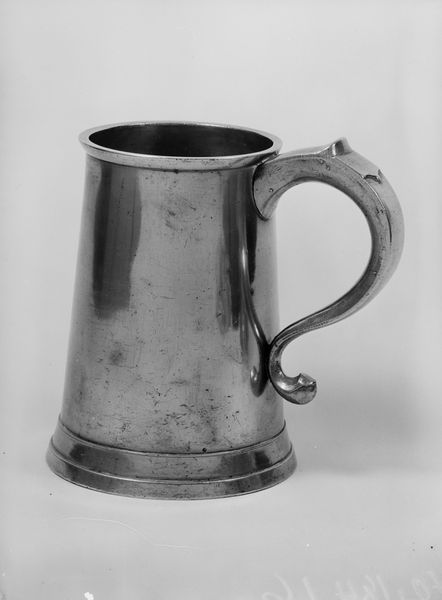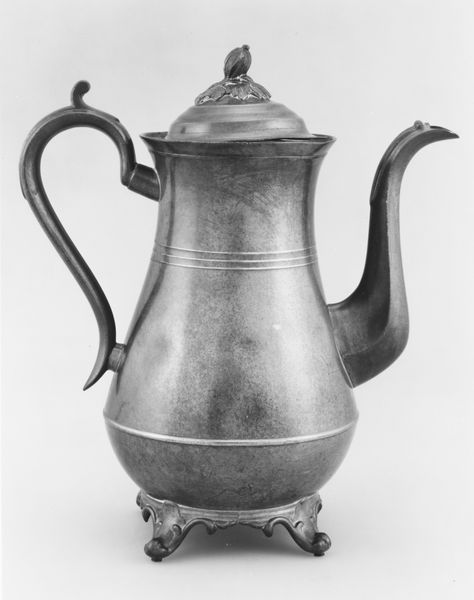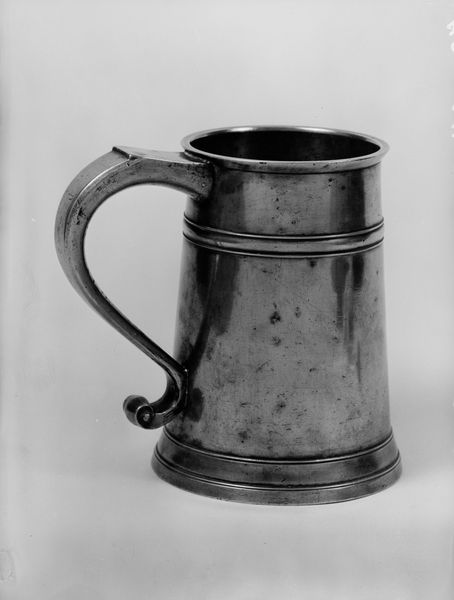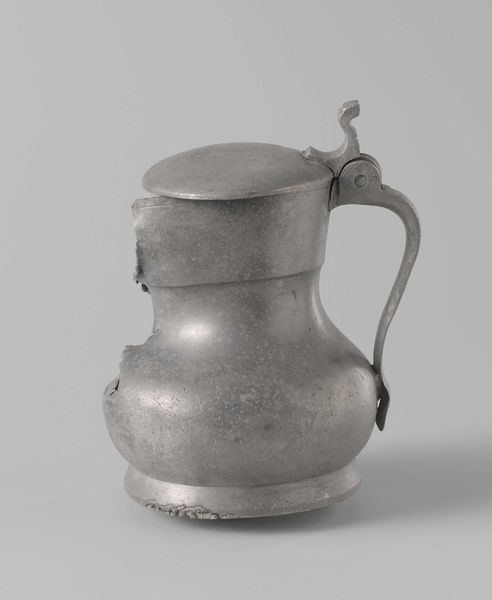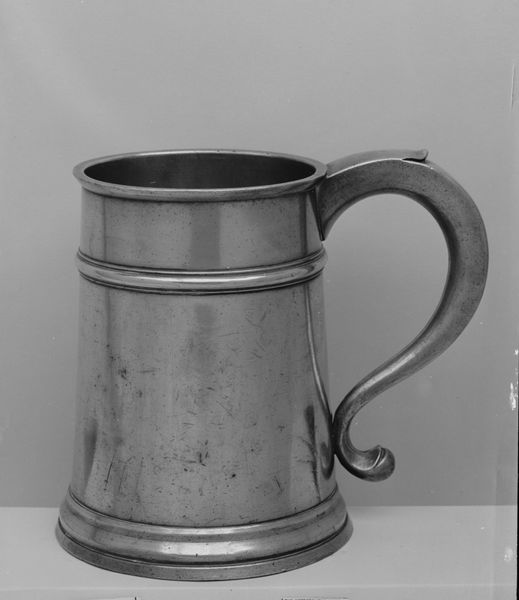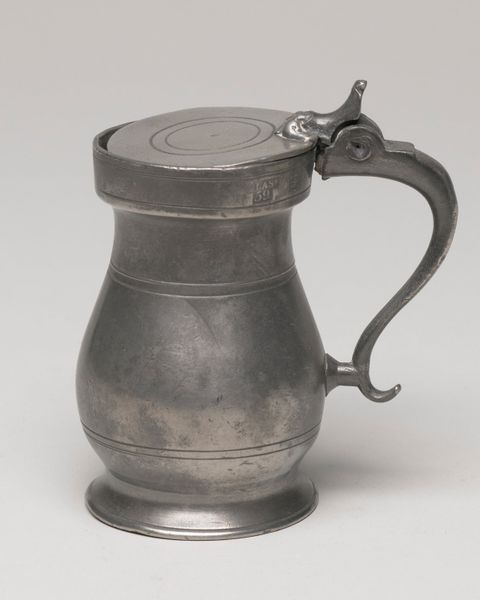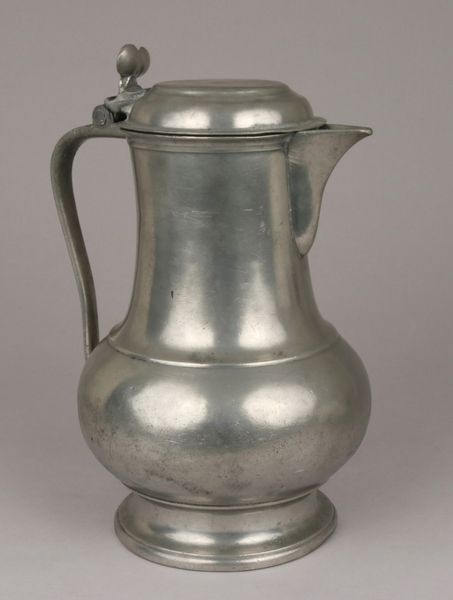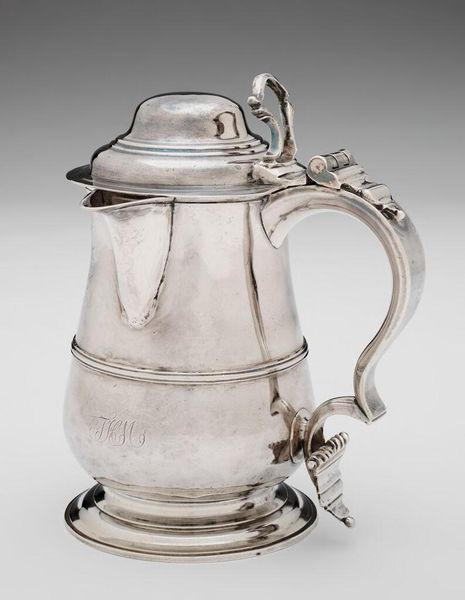
metal, sculpture
metal
sculpture
realism
Dimensions: H. 10 5/8 in. (27 cm)
Copyright: Public Domain
Editor: This is a “Demijohn,” crafted between 1830 and 1855 by James Harvey Putnam. It's a striking metal vessel currently housed at The Met. I find the handle so interesting against the industrial looking body. What draws your eye in this work? Curator: Well, immediately I consider the labor involved. Think about the artisan who meticulously hammered and shaped this metal, and the social implications of a 'Demijohn’ being deemed worthy of artistic attention in the first place. The act of raising utilitarian items to an art object challenges the very definition of 'high art’. Editor: That’s a great point. I was so caught up in its shape that I missed how unusual it is to see something so…ordinary… displayed like this. Is it realism because it copies something ordinary? Curator: In a way, yes, but consider it from a materialist perspective. We’re not just looking at a representation of a container. We're witnessing the culmination of a specific labor process, from the extraction of raw materials to the final polishing of the metal. Each mark, each imperfection, tells a story about the production and consumption practices of the era. Editor: So, by focusing on the object's materiality, we’re not just seeing a pretty container. We’re actually seeing a slice of 19th-century economic and social life? Curator: Precisely! The “Demijohn” isn’t just about aesthetics. It's a testament to the era’s industrial growth, the value placed on metalwork, and how those factors blurred lines between art and craft. Editor: That’s really changed my perspective on the piece. It's more than just a container; it’s a material record of its time. Curator: And that material record invites us to question the categories we impose on art and everyday life, which is really powerful.
Comments
No comments
Be the first to comment and join the conversation on the ultimate creative platform.
